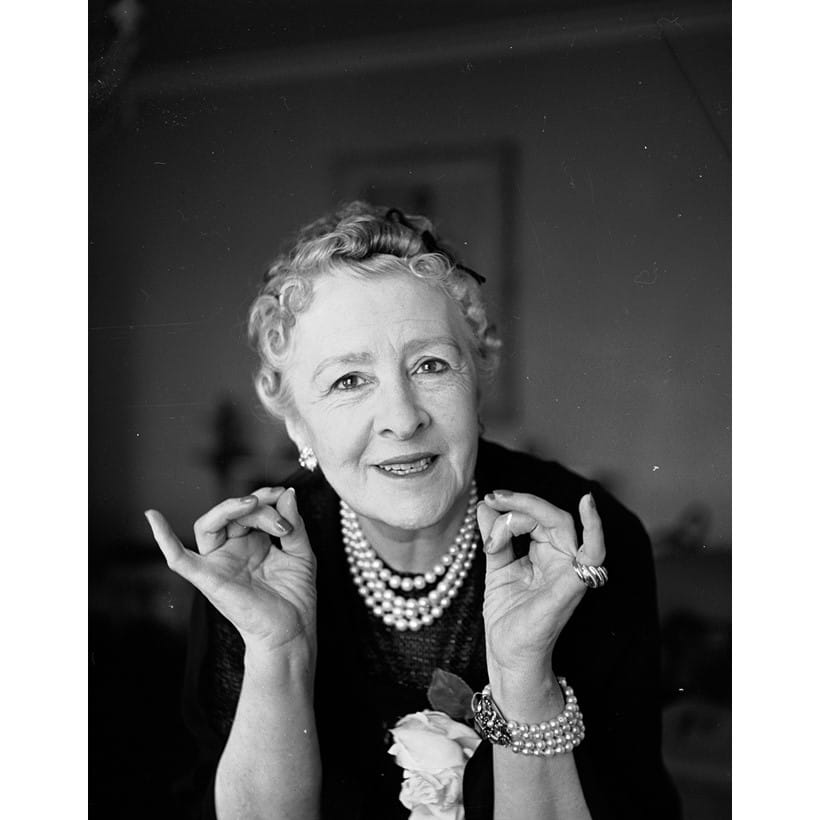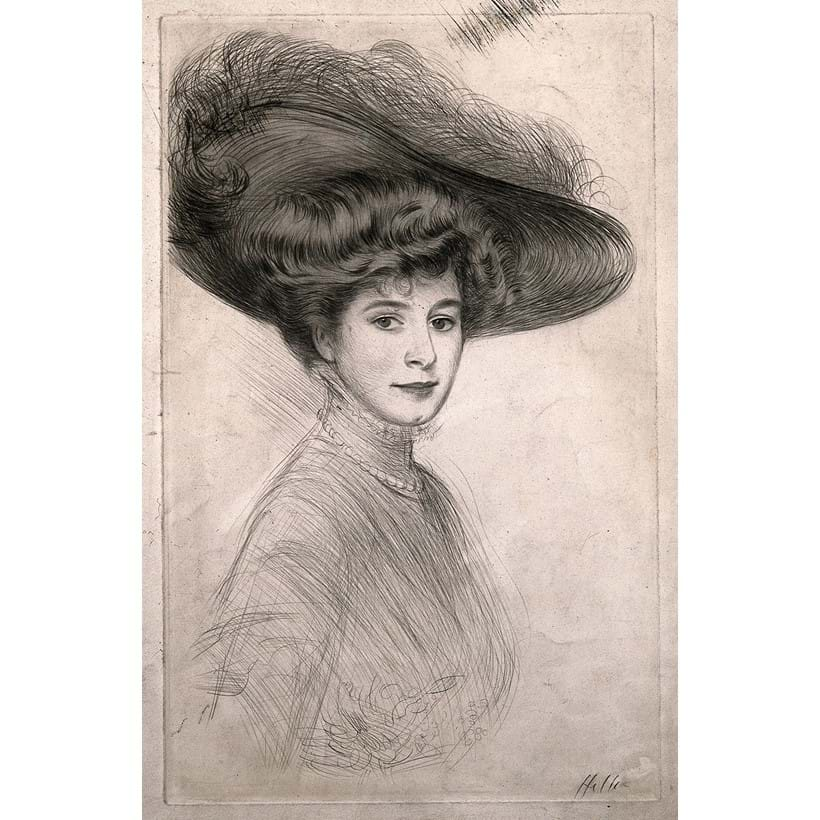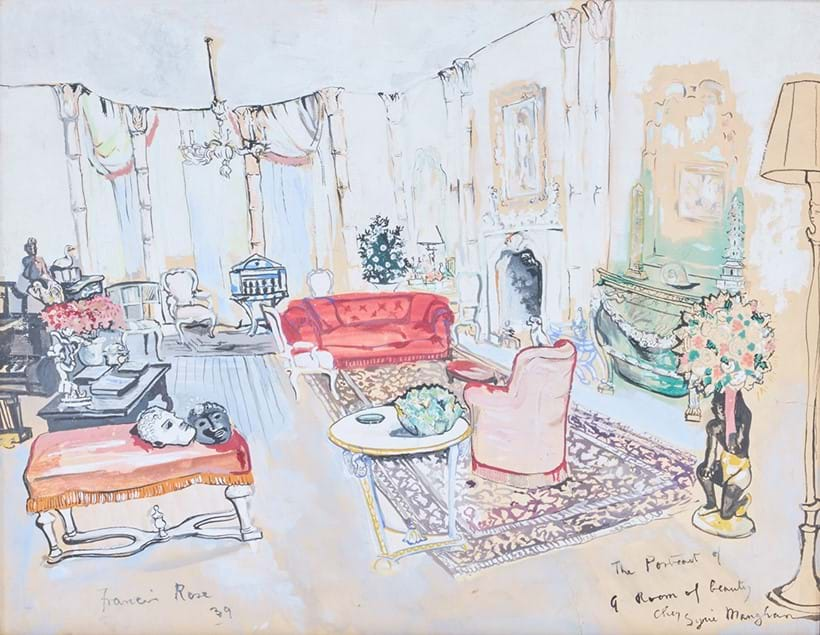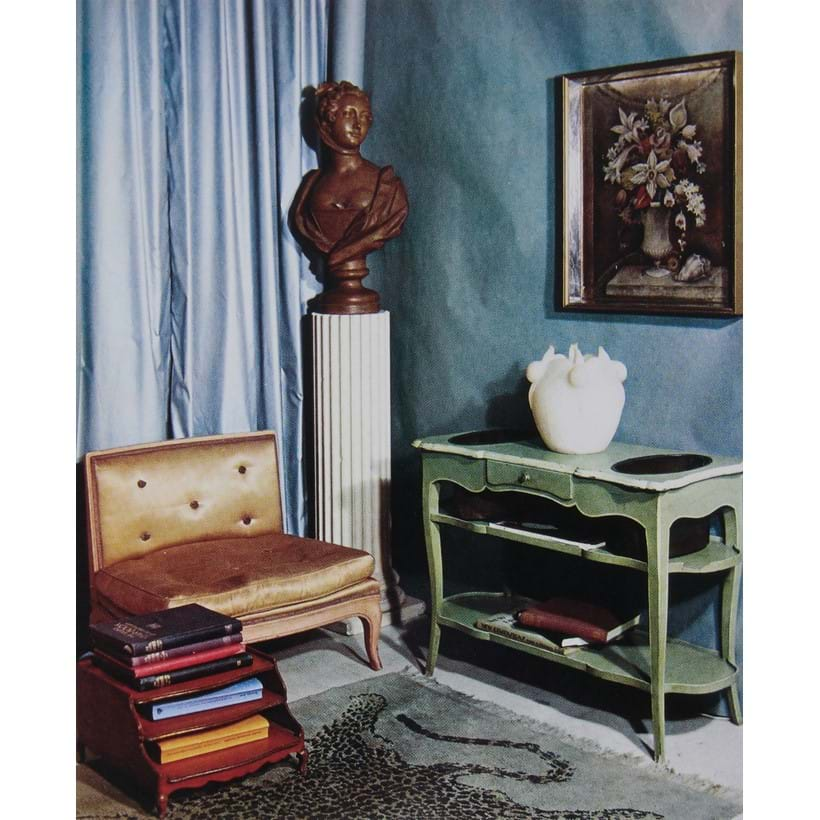An Introduction by Stephen Calloway | Syrie Maugham: A Family Collection | 28 October 2025
Renowned interior designer Syrie Maugham (1879-1955) is celebrated as a visionary who transformed the landscape of 20th century interiors. On Tuesday 28 October, Dreweatts will present the collection of Syrie Maugham, and her descendants, in the auction Syrie Maugham: A Family Collection. Ahead of the sale, we are delighted to have author, art historian and curator, Stephen Calloway tell us more about Syrie, as well as her signature style that revolutionised interior design.

At the height of her fame and success, for ten giddy years from the late 1920s Syrie Maugham was widely held to be one of the foremost interior decorators of the day. Vogue magazine featured her frequently, recognising her not just as one of the first English women to establish herself in this newly emerging profession, but also as a leading figure in fashionable Society and an arbiter of taste and chic. Although she had only begun in business in quite a small way a couple of years previously, in 1927 the drawing room in her Chelsea house – her celebrated and highly novel ‘All-White Room’ – became the most talked-about interior of the moment, hailed on all sides as the epitome of an exciting modern spirit in design. With its rejection of so-called fusty, historical colours and furnishings in favour of long, low sofas, sleek chrome and mirrored screens, and above all pale, monochromatic and textural effects, Syrie’s room heralded a new era in life-style.

The ‘All-White’ revolution was not the whole story though. For whilst Syrie conspicuously adopted a sort of Hollywood style, dressing in pale silks (mostly from Molyneux in Paris) and even powdering her hair, she also had a good eye for fine old furniture and indeed for impeccable quality in everything with which she surrounded herself. By 1933 Vogue could astutely salute her:
"...for teaching us to use white in our houses... and for being one of the few lady decorators who kept her head during the modernistic deluge by consistently combining the old and the new."
Ironically, considering the way in which she was perceived to be at the cutting-edge of the introduction of a thoroughly modern sensibility in design and living, Syrie, born in 1879, could hardly have been, in her origins and upbringing, a more characteristic figure of the Victorian era. Her father was the great Thomas Barnado, the social philanthropist, friend of William Booth of the Salvation Army and founder of the eponymous Dr. Barnado’s Homes. Aged just 21, and perhaps hoping to escape a somewhat dictatorial family life, she married the pharmaceutical millionaire Henry Wellcome, then 47, who had pursued her since a chance meeting in Khartoum. For their son born in 1903 they chose as a godfather Henry Stanley the celebrated journalist-explorer. The marriage was not, however, a success and before long Syrie had responded to advances from several admirers, including Gordon Selfridge, before embarking on a liaison with the popular writer William Somerset Maugham.

Syrie and Willie, as he always preferred to be called, were happy together at first. In 1915 they had a daughter, Liza (named after Maugham’s first successful novel Liza of Lambeth) and shortly after were married. Gradually however it became clear that Maugham preferred to travel and be with his young American secretary/companion Gerald Haxton. Relations with Syrie soured and in due course foundered and became painfully acrimonious. Syrie was one of a number of women around this time, who, finding themselves in need of a new life and means to maintain it, opened cushion and lampshade shops or, more ambitiously, set themselves up, in the phrase of the day, ‘helping their friends with decorating’. Observing this social phenomenon, one wag suggested that a question of the day might be ‘is she happily married or a decorator?’. Syrie, with a good eye and adventurous taste, soon fell on her feet.
Moving easily in the social worlds of both London and New York and other American cities, Syrie rapidly gained a professional reputation and began to secure prestigious projects. Aware of fashionable innovations in France, where professional designers such as Jean-Michel Frank and Serge Roche were using pale natural materials in a modern manner, she developed a distinctive trademark style of her own, specialising in clever effects produced by stripping or bleaching good old pieces of furniture to create an attractive lighter effect in a room. Referred to generically as ‘pickling’, it was jokingly said of her that ‘Syrie would even pickle the Mona Lisa’. She also specialised in refinishing older pieces, especially French eighteenth century style chairs, tables, commodes and cabinets with attractive ‘craquelure’ surfaces or pretty decorative paint effects of flowers and ribbon swags. A number of such highly characteristic pieces appear in this sale.

Moving in these circles often also led to fruitful collaborations, for Syrie loved to work with talented younger friends such as Oliver Messel and Rex Whistler, two masters of the fanciful and romantic style, as well as commissioning striking interventions from rising modernists such as Glyn Philpot.
Not surprisingly, Syrie’s fashionable ideas and high profile appealed to all sorts of successful people seeking to subtly update their houses. As a result, throughout the inter-war years when her business was most thriving, she found herself working not only for grand industrialists in the richer American cities and Hollywood stars, but also for more establishment figures in England and even distinguished clients such as ‘David and Wallis’ (the Duke and Duchess of Windsor) for whom she glamourised the previously dowdy Fort Belvedere. In the post-war years when opportunities for lavish decorating projects were somewhat limited in England, Syrie increasingly spent time in America. There, collaborations with architect David Adler and decorator Frances Elkins cemented her reputation as a tastemaker and led to her working for highprofile social figures like Babe Paley and major clients such as Paul and Bunny Mellon.
Syrie was undoubtedly one of the key figures in interior decoration in the twentieth century. Her adventurous taste and sense of style would have marked her out in any generation, but she also possessed a remarkable grasp of fashion that was very much of its time. She understood, perhaps better that any of her contemporaries and rivals the importance of attracting publicity and she was one of the very first decorators to consider how her schemes would look when shown in photographs in magazines. In this, as in so many other ways, she seems very much a figure for our times too.

View page turning catalogue
Auction Details
Auction:
Tuesday 28 October 2025 | 2pm GMT
Dreweatts, Donnington Priory, Newbury, Berkshire RG14 2JE, UK
Bidding is available in person at our salerooms, online, by telephone or you can leave commission (absentee) bids.
Browse the auction
Sign up to email alerts
Viewing:
- Viewing at Dreweatts London (highlights): 16-17 Pall Mall, SW1Y 5LU
- Tuesday 7 October: 10am - 4pm
- Wednesday 8 October: 10am - 4pm
- Thursday 9 October: 10am - 4pm
- Viewing at Dreweatts Newbury (full sale): Donnington Priory, RG14 2JE
- Friday 24 October: 10am-4pm
- Sunday 26 October: 10am-3pm
- Monday 27 October: 10am-4pm
- Tuesday 28 October: 10am-2pm
- Friday 24 October: 10am-4pm
Further information:
General enquiries: +44 (0) 1635 553 553 | housesales@dreweatts.com
Press enquiries: press@dreweatts.com

















